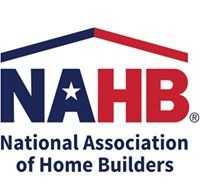WASHINGTON, D.C. – August 5, 2014 – (RealEstateRama) — Each $1,000 increase in the cost of a new median-priced home price forces 206,000 prospective buyers out of the marketplace, according to a new study by the National Association of Home Builders (NAHB).
The number of households affected varies across states and metro areas and largely depends on their population, income distribution and new home prices.
Among the states, the number of households who would no longer be eligible to qualify for a mortgage based on a $1,000 increase to a median-priced home ranges from a low of 313 in Wyoming to a high of 18,250 in Texas.
“This study highlights the real effects that building regulations have on housing affordability,” said NAHB Chairman Kevin Kelly, a home builder and developer from Wilmington, Del. “Local, state and federal government officials need to know that higher regulatory costs have real consequences for working American families. Oftentimes, these government regulations end up pushing the price of housing beyond the means of many teachers, police officers, firefighters and other middle class workers.”
Based on national mortgage underwriting standards and incorporating the latest income distribution data from the American Community Survey and the U.S. Department of Housing and Urban Development, the report contains detailed results for more than 300 metro areas.
The analysis found that every $833 increase in fees paid during the construction process – such as the price of a construction permit or an impact fee – adds an additional $1,000 to the final price of the home.
Measured by local metro areas, the number of households who would be priced out of the market based on a $1,000 increase range from a low of 19 in Napa, Calif. to a high of 5,742 in the New York-Northern New Jersey-Long Island, N.Y.-N.J.-Pa. area.
Looking at affordable metro areas, where roughly 50 percent or more of households can afford new homes, the priced out effects are typically large and can often disqualify thousands of new home buyers, as in the case of Houston-Sugar Land-Baytown, Texas (4,234); Atlanta-Sandy Springs-Marietta, Ga. (4,135); and Las Vegas-Paradise, Nev. MSA (2,044).
The full study is available online at nahb.org/PricedOut2014.







